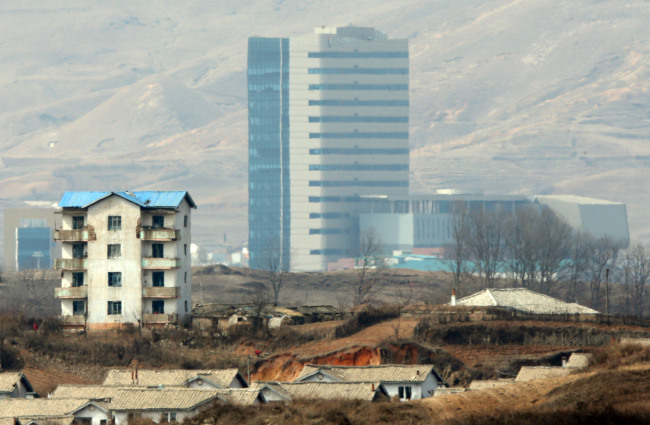Founded under the agreement signed between South Korea’s Hyundai Asan Corp. and the North Korean government in 2000, the Gaeseong Industrial District is the largest inter-Korean economic project to date.
More than 53,000 North Korean workers are employed by 123 South Korean companies that recorded a combined output of nearly $47 million in goods in 2012.
In addition, provided that the industrial district is allowed to be developed fully according to the plans laid out by the two sides, it will grow to require as many as 350,000 North Korean workers.
More than 53,000 North Korean workers are employed by 123 South Korean companies that recorded a combined output of nearly $47 million in goods in 2012.
In addition, provided that the industrial district is allowed to be developed fully according to the plans laid out by the two sides, it will grow to require as many as 350,000 North Korean workers.

For the North Korean government, the complex is a major source of foreign currency. In addition to the $100 monthly salary paid to the workers, Pyongyang levies various taxes on the complex and is given fees for the use of the land.
The industrial district has also come to be the main source of cross-border movement of people. Of the 120,360 South Koreans who crossed the border with the North last year, 120,119 went to Gaeseong. In the same year, no North Koreans visited the South.
For the two Koreas, however, the Gaeseong Industrial District has more than economic implications.
“It is the sole link between the South and North. It was the model for inter-Korean economic cooperation and the Koreas built trust through the Gaeseong district,” said Cho Bong-hyun, a senior researcher at the Industrial Bank of Korea Research Institute. He added that the North Korean government was able to learn management expertise from the district, which it then used in setting up the Rason Special Economic Zone in the northwest of the country.
“Despite the military issues that gave the Gaeseong district difficulties, it continued operations, providing a buffer effect that could alleviate tension on the Korean Peninsula.”
By Choi He-suk (cheesuk@heraldcorp.com)
-
Articles by Korea Herald







![[KH Explains] Hyundai's full hybrid edge to pay off amid slow transition to pure EVs](http://res.heraldm.com/phpwas/restmb_idxmake.php?idx=644&simg=/content/image/2024/04/18/20240418050645_0.jpg&u=20240419100350)







![[From the Scene] Monks, Buddhists hail return of remains of Buddhas](http://res.heraldm.com/phpwas/restmb_idxmake.php?idx=652&simg=/content/image/2024/04/19/20240419050617_0.jpg&u=20240419175937)

![[KH Explains] Hyundai's full hybrid edge to pay off amid slow transition to pure EVs](http://res.heraldm.com/phpwas/restmb_idxmake.php?idx=652&simg=/content/image/2024/04/18/20240418050645_0.jpg&u=20240419100350)

![[Today’s K-pop] Illit drops debut single remix](http://res.heraldm.com/phpwas/restmb_idxmake.php?idx=642&simg=/content/image/2024/04/19/20240419050612_0.jpg&u=)